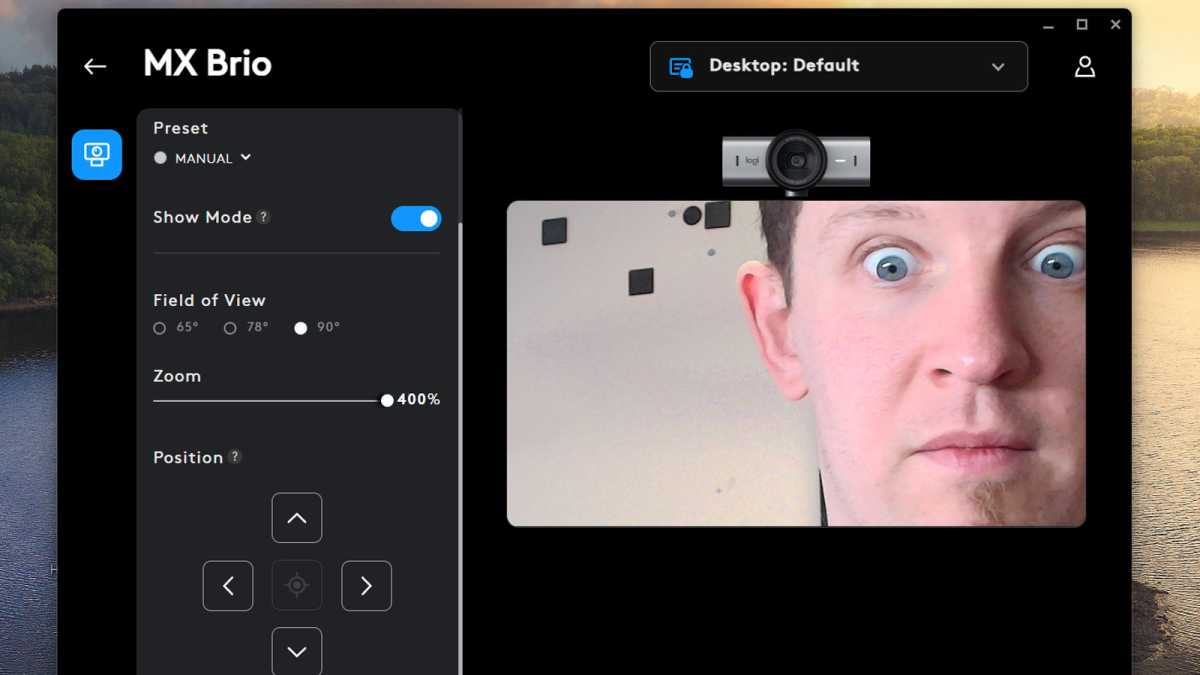Are 4K webcams worth it? The pros and cons to consider
I always thought that buying a 4K webcam was only something that streamers and influencers should care about. I mean, how much better am I really going to look when I’m on a Teams call with my editors, or on a Skype call with my mom? It seemed quite silly to think about.
But I’ve been playing around with several webcam options to see what difference they actually make to everyday video calls and meetings — and as it turns out, there are some real positives with 4K webcams. There are some negatives, too. (And I don’t just mean that suddenly everyone can see that pimple you didn’t bother to cover up.)
Here’s what I’ve learned about why 4K webcams can be worth buying (and why they might not be) depending on your needs and use cases.
Related: How we test webcams at PCWorld
Pro: 4K image quality is indeed betterI know, mind-blowing take here… but bear with me.
Yes, 4K webcams obviously look nicer than their 1080p or 720p counterparts, and that’s thanks to more details captured in their images. The improved sensor quality in 4K webcams makes a massive difference to how you and your environment look on camera.
Take a look at my selfie shots below, which were taken with three different webcam resolutions, all in the same lighting condition. The first shot comes from the built-in 720p camera on a 2019 Acer Predator Triton 500 laptop. The second is from a 1080p Logitech C920s Pro. The third is from a 4K Logitech MX Brio.
 Taken with 720p Acer Predator Triton 500 laptop webcam.
Taken with 720p Acer Predator Triton 500 laptop webcam.Jon Martindale / IDG
 Taken with 1080p Logitech C920s Pro webcam.
Taken with 1080p Logitech C920s Pro webcam.Jon Martindale / IDG
 Taken with 4K Logitech MX Brio webcam.
Taken with 4K Logitech MX Brio webcam.Jon Martindale / IDG
These were taken with ambient light, with the two main sources being the window (behind me) and a static ceiling light (above me).
It’s fair to say that the 4K webcam looks substantially better than the 720p option, and even quite noticeably better than the 1080p alternative. It has a much wider field of view, plus greater detail and clarity. The colors are more natural and nuanced, and it’s better at handling the contrast of a bright backdrop (the window) with a darker foreground.
Sure, going from a 720p built-in webcam to a 1080p standalone webcam still offers the biggest bump, but there’s definitely an argument to be made that the image quality of a modern 4K webcam stands out.
Related: Why are laptop webcams so bad?
Con: 4K webcams are silly expensiveWith most laptops — and even some monitors — coming with their own built-in webcams, it can seem silly to spend any money on a separate webcam, let alone a lot of cash. But if you’re thinking of buying a 4K webcam, then you will have to spend quite a bit for one.
The Logitech C920s Pro webcam (1080p) that I used in these comparisons is available for around $70 at most retailers, which is fairly affordable and maybe even justifiable. But the Logitech MX Brio webcam (4K) is sold for around $200. That’s… not cheap.
Throw in that anyone spending this much on a webcam should also consider some kind of external lighting setup — see below — and the price for looking hot on camera starts to seem kind of mad, especially if you’re only using it to chat with relatives or for your virtual D&D game.
Pro: Software adjustments make a big difference with 4K webcams
Jon Martindale / IDG
With a 4K webcam, you actually get more than just the physical hardware for your money. For example, the Logitech MX Brio comes with a range of software features that help make it (more) worth it.
Also, keep in mind that with a 4K resolution, you have more pixels to work with — and that means digital zoom is far more capable. You can zoom in or crop down to whatever shape and size you like, all without compromising on image quality. Meanwhile, zooming in on a 1080p video is pretty noticeable, and don’t even think about zooming in on a 720p image. (Many built-in webcams don’t even have this functionality.)
In the case of the MX Brio — and some other 4K webcams — you can also adjust exposure (automatically or manually), switch on HDR mode, enable low-light compensation, adjust color balance and temperature, and even change focus manually. That can be awesome if you don’t want autofocus overreacting every time you adjust your positioning.
Con: A non-4K webcam can be just as good with proper lightingRemember when I said it was worth getting an external light for use with your webcam? Well, it turns out you can get a pretty great-looking picture even with a cheaper webcam as long as you have good lighting.
That’s because cheaper cameras cut corners in areas like low light compensation and high dynamic range. If you can provide enough light for the webcam to work with, and if you position those lights to illuminate you the right way, then your webcam will produce a far better image.
The best part? The price of a good lighting setup plus a modest webcam is usually cheaper than a high-end webcam.
 Better lighting, taken with 720p Acer Predator Triton 500 laptop webcam.
Better lighting, taken with 720p Acer Predator Triton 500 laptop webcam.Jon Martindale / IDG
 Better lighting, taken with 1080p Logitech C920s Pro webcam.
Better lighting, taken with 1080p Logitech C920s Pro webcam.Jon Martindale / IDG
 Better lighting, taken with 4K Logitech MX Brio webcam.
Better lighting, taken with 4K Logitech MX Brio webcam.Jon Martindale / IDG
See above for a comparison of my three webcams again, except this time I’m using a Logitech Litra Beam to better illuminate myself.
To be fair, the 4K webcam still looks the best — but the gap between the 4K and 1080p image is far smaller now, surprising given the less-than-a-third-of-the-price nature of the C920s Pro. Even the built-in 720p laptop webcam looks noticeably better with improved lighting.
Of course, the Litra Beam is an expensive streaming light and complete overkill for most people. You can just as easily grab a cheap ring light for $20 to get a similar result, and that would make the overall package far cheaper than buying an expensive 4K webcam.
Pro: Build quality is better in 4K webcamsA $200 webcam has a greater build quality than a $70 one? Ha! That should surprise no one. But it’s true.
Sarcasm aside, Logitech’s MX Brio is a much nicer piece of equipment than the C920s Pro. It’s made of aluminum (and low-carbon aluminum, at that) instead of plastic for a premium feel, and the housing doesn’t flex or creak when you apply pressure or move it around.
The mount is excellent, too, and it has a magnetic attachment rather than a screw-thread. Combine that with a tilting mechanism for the camera, which lets you point it down at your desk to show off documents and trinkets, and you have a clearly superior option. It’s just easier to maneuver the camera into whatever position you need it to be in.
Related: The best webcams actually worth buying
Con: Higher bandwidth costs are a concern Chris Montgomery / Unsplash
Chris Montgomery / Unsplash
While some of you are no doubt living your best life with Google Fiber and 10Gbps up and down, some of us aren’t so lucky. We have to worry about data caps and bandwidth limits.
If you’re like me, you might be fine uploading 5Mbps of 1080p webcam video while your kids are streaming Netflix in the other room. But if you were to upgrade to a 4K webcam, you’d suddenly be sending 20Mbps upstream — and that could be a real internet bandwidth clog.
The issue is even worse if you ever plan to use the 4K webcam while on the go, where your 5G signal might be too weak to stream properly, where roaming charges can mount up, or where public Wi-Fi just isn’t suitable for handling your 4K webcam.
It goes both ways, too. Your own internet might be great, but what about your grandma’s internet? She might not be able to handle the barrage of video data from your 4K webcam. How much time do you want to spend troubleshooting for her the next time you’re on a call together?
I’ll keep it, but not sure I’d buy itWhenever I write about my own experiences about something and some of the hardware was provided for me, I have to couch any opinions I have with the fact that I didn’t actually spend my own money on it.
Which raises the question: Would I pay money for it?
Well, the 1080p Logitech C920s Pro webcam is something I did actually buy on my own, and I would 100 percent buy it again. It’s far, far better than the built-in webcam of any laptop I’ve used — and it’s not just about image quality but also the ability to move the webcam around and even unplug it whenever I need extra, guaranteed privacy. That alone is enough for me to recommend it.
The 4K Logitech MX Brio is undoubtedly the better webcam, and I am glad to have it because it does make me look better on conference calls and in virtual D&D sessions. But would I pay $200 for it? Probably not. An external light and a 1080p webcam are good enough for me.
Further reading: What to do when your webcam is on for no reason
Disclosure: For full transparency, I want to say up front that some of the hardware discussed in this article was provided by outside sources. Specifically, the MX Brio was sent to me by Logitech and the gaming laptop was provided by another publication I write for. The C920s Pro was purchased myself.
